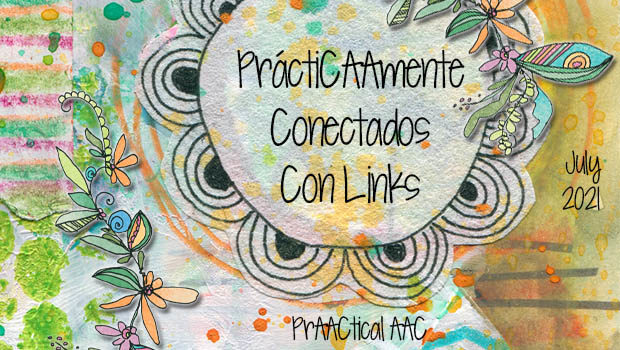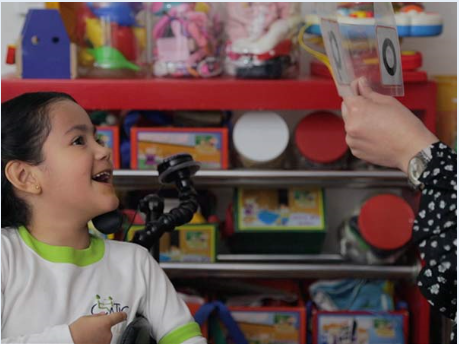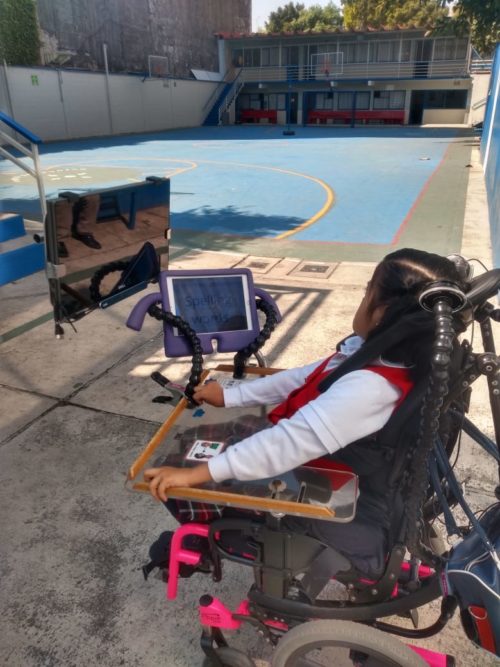PráctiCAAmente Conectados Con Links – Julio 2021

AAC friends, if you’re interested in AAC materials in Spanish, please check out the content in this list and feel free to add your own. In addition to these resources, you may also enjoy learning about the work of Wendy Moreno, a parent of an AAC user in Mexico.
::::::::::::::::::::::::::::::::::::::::::::::::::::::::::::::::::::::::::::::::::::::::::::::::::::::::::::::
Estamos comenzando Julio compartiendo links en español, continuamos nuestro recorrido por el mundo conociendo experiencias de CAA en español, esta vez llegamos a México donde Wendy Moreno, nos comparte sus reflexiones y vivencias.
PREGUNTAS AUMENTATIVAS Y RESPUESTAS ALTERNATIVAS
¿Qué pasaría si un día, tan sólo un día, nuestra comunicación se limitará a responder preguntas cerradas sin hacer uso de nuestra voz? Seguramente algo se nos ocurrirá para darnos a entender. Pero ¿qué pasa cuando la misma pregunta se la hacemos a una persona que, por su discapacidad, presenta necesidades complejas de comunicación? Muchos, podríamos conformarnos con: “responde a un sí o no haciendo un gesto”, “asienta la cabeza para un sí cuando le preguntan algo”, y así, podríamos enumerar muchos ejemplos. Y yo me pregunto
¿Esta es la manera en la que nos comunicamos?
Soy mamá de una persona que usa Comunicación Aumentativa y Alternativa (CAA) y lo que he aprendido al día de hoy, sin duda alguna, no lo sabía años atrás. Al principio, no era fácil de entender y mucho menos de explicar.
Sí, he de confesar que en la familia nos ha llevado tiempo comprender lo que significa, pero más allá del significado como tal, el llevarlo a la práctica en el día a día tan afanoso que llevamos todas las personas que vivimos con una persona con discapacidad.
No es fácil y más cuando la CAA implica mucho tiempo de práctica, paciencia y muchos retos que pueden ir desde la adquisición de los equipos tecnológicos, la formación académica que debe de tener el terapeuta, uso efectivo del dispositivo en situaciones cotidianas, entre otros. Sin embargo, cuando uno atestigua que el uso de la CAA mejora la interacción social, los sentimientos de autoestima y el aprovechamiento escolar, por mencionar algunos, uno busca esparcir la CAA a más espacios, ¡a más gente!
Cuando escuchamos el término de discapacidad, podemos enlistar todos los tipos de ésta y en automático, saber de qué herramientas podemos echar mano para ayudar a las personas con alguna discapacidad.
Como papás, tenemos que dar visibilidad a la importancia de que nuestros hijos se comuniquen por medio de un tablero o un dispositivo electrónico. Tenemos que avalar su uso y hacer ver que no “solo” es una tableta o computadora ¡es su voz! Es indispensable caer en cuenta que el poder de expresarse, de comunicarse, es incalculable y hace una gran diferencia.
La palabra comunicar, por su raíz latina comunicare significa “poner en común”, así que debemos ponernos en común con ellos.
A fin de cuentas la voz no es el único vehículo para expresarnos.
::::::::::::::::::::::::::::::::::::::::::::::::::::::::::::::::::::::::::::::::::::::
We are starting July sharing links in Spanish, and continuing our journey around the world – learning about AAC experiences AAC in Spanish. This time we arrive in Mexico, where Wendy Moreno shares her reflections and life experiences with us.
AUGMENTATIVE QUESTIONS AND ALTERNATIVE ANSWERS
What would happen if one day, just one day, our communication was limited to answering closed questions without using our voice? Surely we will be able to think of something to help us understand each other. But what happens when we ask the same question to a person who, due to his disability, has complex communication needs? Many of us could settle for: “respond to a yes or no question by making a gesture”, “nod your head for a yes when they ask you something”, and in this way, we could list many examples. And I wonder,
Is this the way everybody communicates?
I am the mother of someone who uses Augmentative and Alternative Communication (AAC). And what I have learned about this topic, without a doubt, was impossible to even imagine years ago. At first, it was not easy to understand AAC, much less to explain it to other people.
Yes, I must confess that in the family it has taken us time to understand what AAC means to us. And to go beyond the literal meaning, to put it into practice on a day-to-day basis, is so difficult that all of us who live with a person with a disability feels burdened by the enormity of it.
It is not easy. AAC can be so burdensome because it involves a lot of practice time, patience and many challenges that can range from the acquisition of technological equipment, the academic training that the therapist must have, effective use of the device in everyday situations, and more. However, when one witnesses that the use of AAC improves social interaction, feelings of self-worth and school achievement, to name a few, one seeks to spread AAC to more spaces, to more people!
When we hear the term disability, we can list all types of disability and automatically know what tools we can suggest to help people with specific challenges.
As parents, we have to raise awareness of how important it is to us that our children can learn to communicate using a printed display or an electronic device. We have to endorse its use and show that it is not “only” a tablet or computer, it is your voice! It is essential to realize that the power to express yourself, to communicate, is incalculable and makes a great difference.
The word communicate, from its Latin root comunicare means “to put in common”, so we must put ourselves in common with our children.
After all, use of the human voice is not the only way to express ourselves.
:::::::::::::::::::::::::::::::::::::::::::::::::::::::::::::::::::::::::::::::::::
To post your own link, scroll all the way down to the bottom of this post and complete the form. Enter the URL and the name/title in the boxes provided below. If you are on a mobile device, click over to the full website version to do this.
The AAC Link Up is moderated to keep us from being spammed so it may take a little while for your link to show up.
Note: If you receive this post in your email inbox, you are probably getting it before anyone has had a chance to add their links. Check back later in the day if you’re interested in seeing what people from around the globe are sharing.
Filed under: PrAACtical Thinking
This post was written by Carole Zangari
